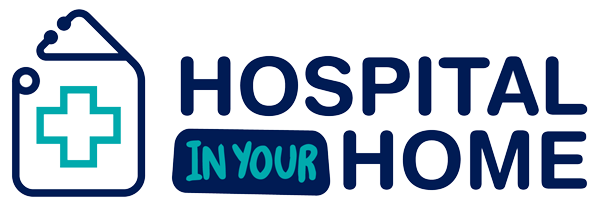Patient-Centered Care: How the Hospital at Home Model Enhances Patient Experience

In the evolving landscape of healthcare, the Hospital-at-home model (HoH) is emerging as a revolutionary approach to patient care, transforming the way we think about medical treatment and patient experience.
This model is not just a trend; it’s becoming a vital part of healthcare systems worldwide, offering a blend of convenience, personalized care, and efficiency that traditional hospital settings struggle to match.
Let’s explore the intricacies and benefits of this innovative healthcare model.
Understanding the Hospital-at-Home Model
The Hospital at Home model was initially developed in the early 1990s by researchers at Johns Hopkins University. It is designed to provide hospital-level care to patients in the comfort of their own homes.
A typical HoH setup includes a range of medical, technological, and human resources collaborating to deliver comprehensive care outside the conventional hospital environment.
One of the lesser-known facts about the HoH model is that it has been shown to reduce hospital readmissions by up to 19% compared to traditional care, according to a study published in the Journal of the American Medical Association.
This is largely due to the tailored treatment plans that address each patient’s specific needs in a familiar environment.
Benefits of the Hospital-at-Home Model for Patients
1. Enhanced Patient Satisfaction
The Hospital at Home model prioritizes a patient-centered approach that significantly enhances overall patient satisfaction.
Patients receive care in the comfort and familiarity of their homes, which is often more comfortable than a hospital setting.
This personalized attention helps patients feel more cared for and less like just another number.
2. Reduced Risk of Hospital-Acquired Infections
One of the most compelling benefits of receiving care at home is the reduced exposure to hospital-acquired infections (HAIs).
Despite their best efforts, hospitals can be breeding grounds for various infections, which can be particularly dangerous for vulnerable patients.
The environment is more controlled in a home setting, and the risk of encountering harmful pathogens is minimized.
3. Psychological Comfort
Being treated at home offers significant psychological benefits. Patients tend to experience less stress and anxiety when they are in a familiar environment.
The presence of family and comfort in one’s own space can greatly enhance mental well-being and contribute to a more positive recovery experience.
4. Faster Recovery
Research indicates that patients often recover faster at home than in a hospital. The familiar surroundings of home can have a therapeutic effect, reducing recovery times and improving outcomes.
This faster recovery benefits the patient’s health and helps reduce healthcare costs associated with prolonged hospital stays.
5. Family Involvement and Support
Hospital at Home models facilitate greater involvement from family members in the patient’s care process.
This support system is crucial, as family members can provide emotional support, assist with daily tasks, and help monitor the patient’s health.
Family involvement ensures that care continues seamlessly, as loved ones are more in tune with the patient’s needs and progress.
Benefits of the Hospital-at-Home Model for Healthcare Systems
The Hospital at Home model is gaining traction as an innovative way to provide care, presenting numerous advantages for patients and the healthcare systems that implement them.
Here’s a look at some of the key benefits:
1. Reduction in Hospital Overcrowding
By allowing patients who meet specific criteria to be treated at home, this model helps alleviate the pressure on hospital facilities.
It frees up hospital beds for more severe cases requiring intensive care and specialized medical equipment, thus optimizing available resources.
2. Cost-Effectiveness
One of the most compelling advantages of the Hospital at Home model is its ability to reduce costs significantly.
On average, this model can save healthcare systems about 30% compared to the costs associated with traditional inpatient care.
This reduction is due to several factors, including lower staffing requirements and decreased use of hospital resources.
3. Decreased Resource Consumption
Treating patients at home means reduced demand for hospital resources such as beds, medical equipment, and utilities.
This not only helps lower operational costs but also reduces the environmental impact of healthcare facilities.
4. Reduced Risk of Hospital-Acquired Infections
Hospital-acquired infections are a serious concern in healthcare settings, often leading to extended stays and additional treatments.
The Hospital at Home model minimizes this risk as patients receive care in their own homes, where they are less likely to be exposed to pathogens commonly found in hospital environments.
5. Enhanced Patient Satisfaction
Patients treated at home often report higher satisfaction due to the comfort and familiarity of their surroundings.
This model also allows for more personalized care and potentially greater family involvement in the patient’s care process, which can contribute positively to outcomes.
6. Improved Resource Allocation
With fewer patients occupying the beds for conditions that can be effectively managed at home, hospitals can allocate their resources more efficiently.
This includes better management of medical staff, more focused use of specialized equipment, and improved care for patients who require hospitalization.
7. Encourages Technological Integration
Implementing a Hospital at Home program often requires adopting advanced technologies, such as remote patient monitoring tools and telehealth services.
This push towards technology integration can improve overall healthcare delivery and open up new avenues for patient management.
Technological Innovations Supporting HoH
The backbone of the Hospital at Home model is the advanced technology that enables it.
Telehealth platforms, remote monitoring tools, and mobile health applications are integral to its success.
These technologies ensure continuous monitoring of the patient’s health and facilitate instant communication with healthcare providers.
A fascinating aspect of the technological support for HoH is using artificial intelligence (AI) to predict patient risks and personalize care plans.
This AI integration represents the cutting edge of home healthcare, where predictive analytics can significantly enhance patient outcomes.
Challenges and Considerations
Despite its advantages, the Hospital at Home model faces several challenges.
Geographic and infrastructural limitations can hinder the availability of HoH services, especially in rural or underserved areas.
Additionally, not all patients are suitable candidates for home-based care; typically, HoH is best suited for patients with specific conditions that require frequent monitoring but not critical care.
Training healthcare providers to operate effectively in a home-based setting is another challenge.
Home care requires a different set of skills and a higher level of autonomy from medical professionals.
Patient and Provider Perspectives
Patient and provider feedback has been overwhelmingly positive, with many highlighting the enhanced communication and personalized interaction that the Hospital at Home model facilitates.
For instance, a patient case study reported in the New England Journal of Medicine illustrated how a patient managed a complex pulmonary condition at home with the help of advanced telehealth technologies and periodic nurse visits, dramatically improving his quality of life.
Healthcare providers have also noted that the model allows them more time with each patient, leading to better care delivery and increased job satisfaction.
Conclusion
The Hospital at Home model is spearheading a healthcare revolution, heralding a future where patient care is more personalized, efficient, and deeply humane.
With over 30 years of expertise, Hospital in Your Home in Australia has been at the vanguard of this transformative approach, expertly tailoring healthcare solutions that meet individual needs right at home.
As we continue to navigate the complexities of modern healthcare, the profound insights and undeniable benefits of this model will undoubtedly influence its development well into the future.
To discover how Hospital in Your Home can help you or your loved ones benefit from hospital-level care in the comfort of your home, don’t hesitate to contact us at Hospital in Your Home US.
Join us in shaping a healthier, more patient-centered future.
Conclusion
What is the Hospital at Home model?
The Hospital at Home model is a healthcare delivery system where patients receive hospital-level care in the comfort of their own homes. This model utilizes a combination of in-home visits by healthcare professionals and remote monitoring technology to manage acute conditions that traditionally required in-hospital care.
How does the Hospital at Home model enhance patient experience?
Patients benefit from personalized care, reduced risk of hospital-acquired infections, and the comfort of being in a familiar environment. This approach not only tends to improve patient satisfaction and comfort but also allows for more direct family involvement in patient care, enhancing the overall care experience.
Is the Hospital at Home model safe for all types of patients?
While the Hospital at Home model is safe and effective for many conditions, it is not suitable for everyone. Patients are carefully selected based on specific criteria such as the stability of their medical condition and the suitability of their home environment to ensure safety and the effectiveness of treatments.
What are the cost implications of the Hospital at Home model compared to traditional hospital stays?
Generally, the Hospital at Home model can be more cost-effective than traditional hospital stays. Reduced overhead costs, fewer hospital readmissions, and shorter treatment durations contribute to overall cost savings, making it a financially viable option for many patients and healthcare systems.
How does technology support the Hospital at Home model?
Technology plays a crucial role in the Hospital at Home model through the use of telehealth, remote monitoring devices, and digital communication tools. These technologies enable healthcare providers to monitor patients continuously, manage treatments, and respond quickly to any changes in the patient’s condition, thereby maintaining a high standard of care remotely.
